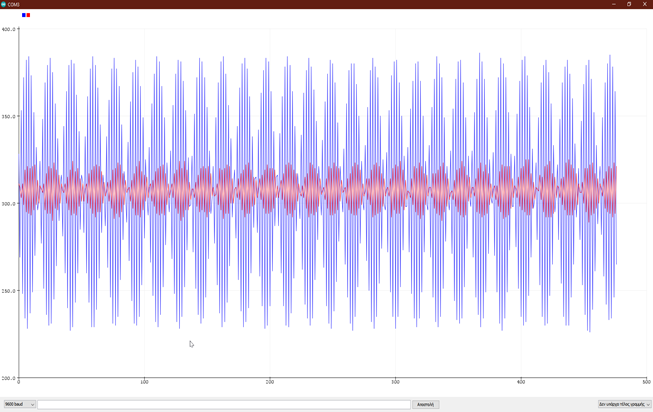Electromyography system(EMG)
An electromyogram is a functional examination to study the peripheral nervous system and muscles.
Electromyography allows the identification of dysfunctions in muscle activation, thus allowing the course of recovery to be determined.
It is an ideal supplement for the analysis of the movement and the measurement of the pressure distribution of the soles.
The EMG system records the potential of muscle activity using surface electrodes and is suitable for measuring muscle groups simultaneously.
The activity of small and large muscles can be identified accurately and reliably.
The EMG device is comfortably placed on the patient’s body and works in sync with the gait analysis of the FDM systems.
Construction of an autonomous Electromyograph (EMG) system using the Arduino microcontroller
ELECTROMYOGRAPH TERMINAL UNIT (HARDWARE EMG)
The final unit of the Electromyograph includes two EKG-EMG Sensor units (OLIMEX),
for the operation of two channels in collaboration with the Arduino Uno Rev3 or the Olimexino-328 board.
As shown in the picture, the Arduino Uno board was used for the implementation of the software and for experimental measurements.
The output signal is proportional and must be further distinguished in order to give the choice of digital processing.
This is done through a special ADC that is integrated in the MCU of the base board. Like the OLIMEXINO-328 board to give us better signal discrimination.
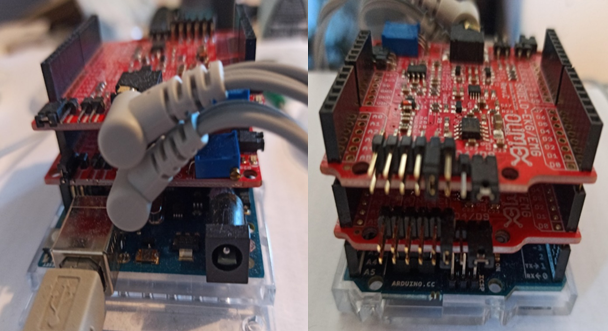
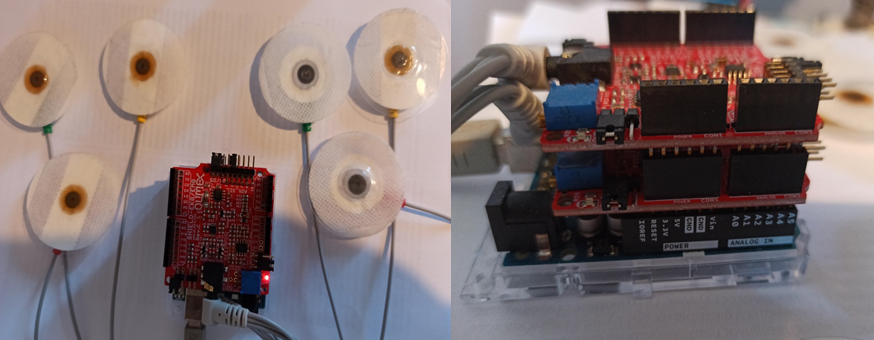
The application code on the Arduino microcontroller (Sketch Arduino)
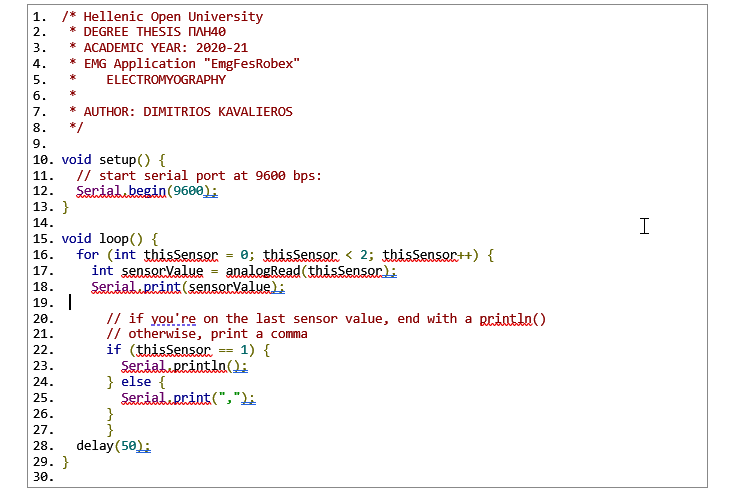
Serial Channel Output (Arduino)
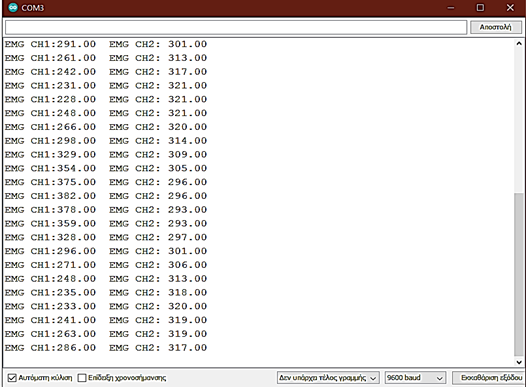
Serial Designer (Arduino), 2 Channels
